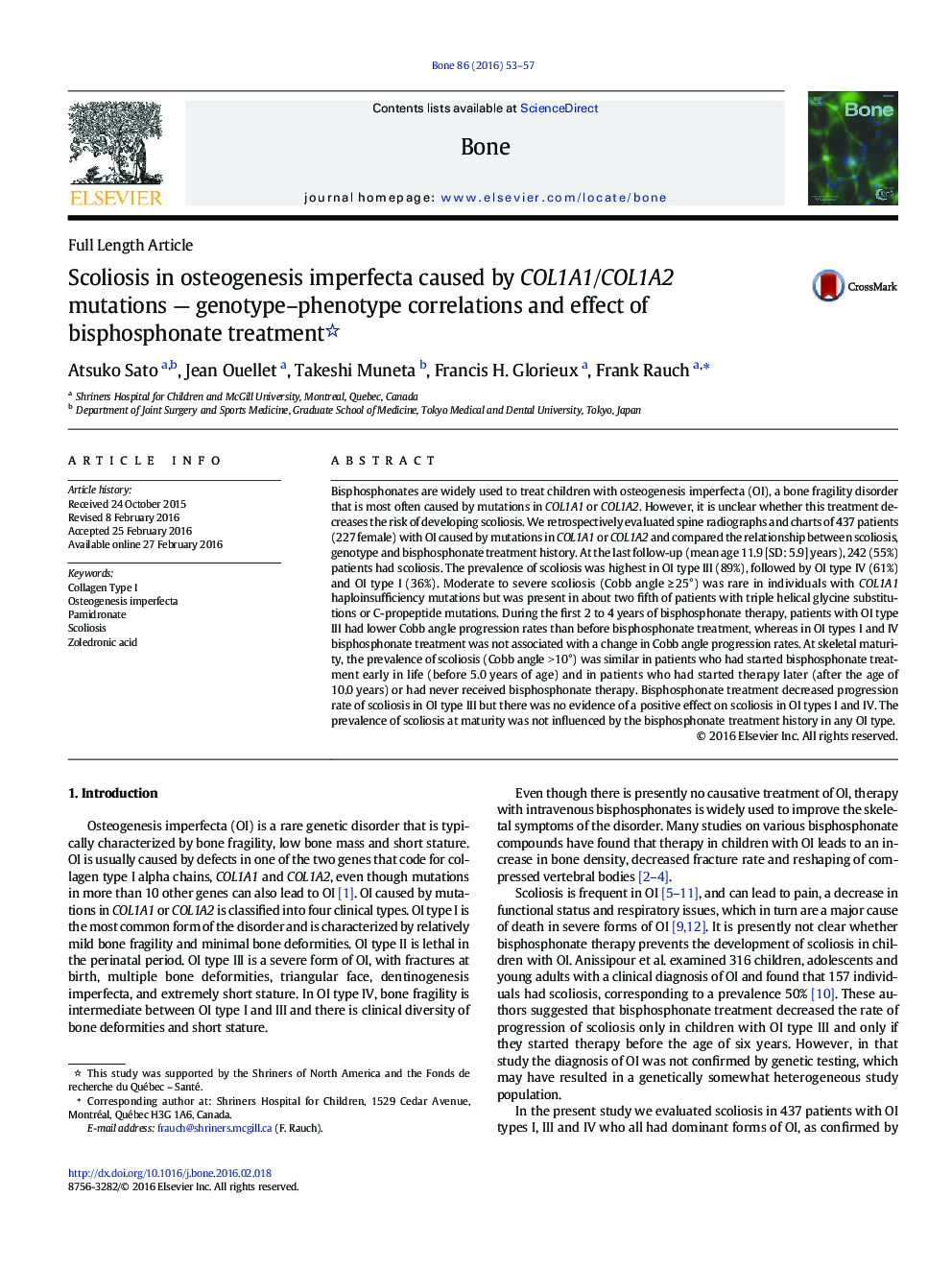| کد مقاله | کد نشریه | سال انتشار | مقاله انگلیسی | نسخه تمام متن |
|---|---|---|---|---|
| 5889059 | 1568133 | 2016 | 5 صفحه PDF | دانلود رایگان |

- 437 patients with OI caused by COL1A1 or COL1A2 mutations were assessed.
- Scoliosis prevalence was highest in OI type III (89%), followed by OI type IV (61%) and OI type I (36%).
- Scoliosis prevalence at maturity was not influenced by bisphosphonate treatment.
Bisphosphonates are widely used to treat children with osteogenesis imperfecta (OI), a bone fragility disorder that is most often caused by mutations in COL1A1 or COL1A2. However, it is unclear whether this treatment decreases the risk of developing scoliosis. We retrospectively evaluated spine radiographs and charts of 437 patients (227 female) with OI caused by mutations in COL1A1 or COL1A2 and compared the relationship between scoliosis, genotype and bisphosphonate treatment history. At the last follow-up (mean age 11.9 [SD: 5.9] years), 242 (55%) patients had scoliosis. The prevalence of scoliosis was highest in OI type III (89%), followed by OI type IV (61%) and OI type I (36%). Moderate to severe scoliosis (Cobb angle â¥Â 25°) was rare in individuals with COL1A1 haploinsufficiency mutations but was present in about two fifth of patients with triple helical glycine substitutions or C-propeptide mutations. During the first 2 to 4 years of bisphosphonate therapy, patients with OI type III had lower Cobb angle progression rates than before bisphosphonate treatment, whereas in OI types I and IV bisphosphonate treatment was not associated with a change in Cobb angle progression rates. At skeletal maturity, the prevalence of scoliosis (Cobb angle > 10°) was similar in patients who had started bisphosphonate treatment early in life (before 5.0 years of age) and in patients who had started therapy later (after the age of 10.0 years) or had never received bisphosphonate therapy. Bisphosphonate treatment decreased progression rate of scoliosis in OI type III but there was no evidence of a positive effect on scoliosis in OI types I and IV. The prevalence of scoliosis at maturity was not influenced by the bisphosphonate treatment history in any OI type.
Journal: Bone - Volume 86, May 2016, Pages 53-57